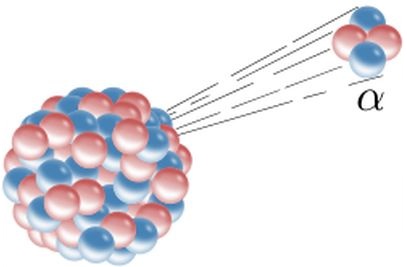
Ninety of the elements occur in nature. The smallest and lightest of the elements is hydrogen. Yet, it is abundant in Earth. Almost no hydrogen gas escapes Earth’s atmosphere. This is partly because hydrogen is reactive and exists almost exclusively in combination with other, heavier elements. Helium, too, is a gas. It is the second lightest element. However, it is neither reactive nor abundant. It does not occur in nature in compound form. Why doesn’t it all escape Earth’s atmosphere?
Comparing Hydrogen and Helium
Although hydrogen is the lightest element and atom, it almost never exists, even as a gas, in atomic form. It assumes, not monatomic form, H, but diatomic form, H₂. The weight of that is twice the weight of an isolated atom, that is 1.008 x 2 = 2.016. Helium, on the other hand, being non-reactive, exists solely in its monatomic form, He. Its weight is 4.003. So helium gas is roughly twice the weight of hydrogen gas.
Odd as it may sound, this is relatively insignificant, since the weight of an average molecule of air or atmosphere is about 28. This is 7 times as heavy as helium and 14 times as heavy as hydrogen. No wonder H₂-filled and He-filled balloons rise so quickly in the atmosphere. Both gases, this would suggest, should soon have been depleted. Once again, though, hydrogen exists almost completely in combined form, not in its elemental gaseous form.
So why doesn’t—indeed, why hasn’t—Earth’s He disappear(ed)? There are a couple/few reasons why.
Why All the He Does Not Escape
Helium is found in locations and formed in ways that have prevented its complete escape until now. Helium exists abundantly throughout the universe, but on earth, if any reaches the atmosphere, indeed it does escape. However, helium is formed by the radioactive decay of certain heavier elements within Earth’s crust. In fact, since the Earth’s beginning, it appears large underground reserves may have built up. Most of that has been separated from certain natural gas deposits.

That radioactive decay produces new He is not only reasonable but it is almost a certainty. This can be seen by the very recent discovery of a huge helium reserve in the area of Tanzania. For further information, see the references section, below.
Examples of Natural Helium Producing Radioactive Decay
An atom of helium consists of an atomic center or nucleus containing 2 protons and 2 neutrons, surrounded by two orbiting electrons. The element variety is not determined by the electrons, however, so an He atom stripped of its two electrons is still considered to be He. However, in this no-electron state, He bears an electrical charge of ⁺2 and is called an alpha particle. In radioactive decay equations, however, there is ordinarily no need to keep account of the electrons. Thus,
231Th231 → 235U235 + 4He
[thorium-231 yields uranium-235 plus He-4]
and
226Ra → 222Rn + 4He
[radium-226 yields radon-222 plus He-4]
and
222Rn → 218Po + 4He
[radon-222 yields polonium-218 plus He-4]
and
218Po → 214Pb + 4He
[polonium-218 yields lead-214 plus He-4]
Note: You might also enjoy Dust Storms on the Moon
References:

You know, I had never thought of that question before you posed it!
What do they use the reserves of helium for? Not just for balloons?
I’ve never looked into all its uses, but at NRAO, we used liquid helium for extreme cryogenic studies of microwave electronics devices.